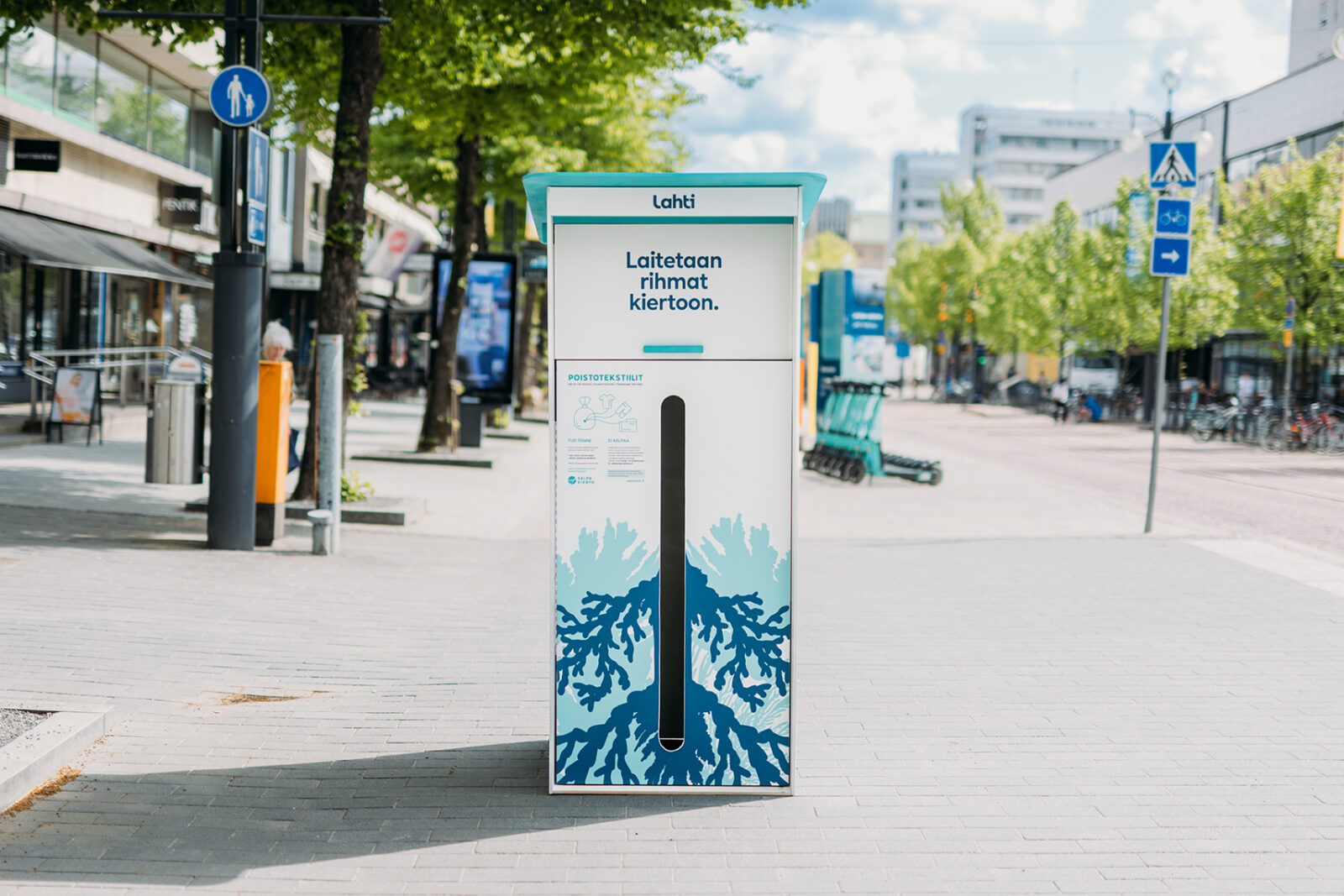The textile deposit is an experimental project set up by Lahti to see if small incentives, in this case provided by the city, could have a positive effect on the recycling rate of textile waste, which is currently one of the least recycled types of waste. Salpakierto, a municipal company which operates waste management in the Lahti region, has currently six collection points for textile waste. In 2023, the collection points have averaged around 420kg of recycled textiles per week, averaging around 70kg per collection point. With the Textile Deposit scheme, the weekly result for a single collection point was 350 kg of textiles, which is five times the previous amount.
–The Textile Deposit has been a runaway success. The results we’ve seen are a positive signal for systemic incentives for recycling. A nation-wide deposit-based recycling system for textiles could give a significant boost to the recycling rate. In Finland, we’ve seen it with bottles and beverage cans, their recycling rate is well above 90% – could these kinds of incentives be applied across the board?, says Veera Hämäläinen, Communications Director for the City of Lahti.
Cities are in a key role in making recycling easier
As a leading environmental city and a European Green Capital 2021, Lahti has set an official goal of becoming a zero-waste city by 2050. The Textile Deposit is an example of an everyday innovation that directly aims to reduce the amount of waste. In the pilot, locals could exchange their textile waste for coffee vouchers and passes to the local pool.
Finland took a step towards a circular economy for textiles at the beginning of the year, as a new law requiring cities and municipalities to make separate collection bins for textile waste available to all Finns came into effect. The separate collection of textile waste makes it possible for discarded clothes and household textiles to be reused as recycled fiber. Separate collection of textile waste is set to be rolled out across the EU by 2025.
The issue textile waste is both a huge issue and a huge opportunity: The average European throws away 11kg of textiles every year, while around the world, a truckload of textiles is landfilled or incinerated every single second. According to a report by McKinsey & Company, fiber-to-fiber recycling at scale could be achieved by 2030, creating a new and sustainable circular industry in Europe.
